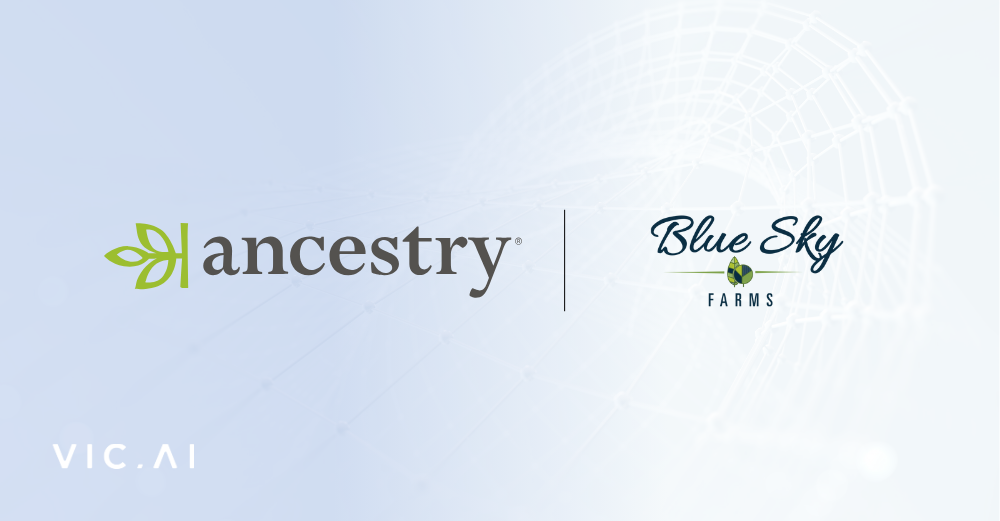There is little doubt that AI is the future of a successful enterprise. This is our total conviction at Vic.ai, which was built as an AI company from the get-go. AI was never just drizzled on top of an already existing technology. We built something smarter than a solution for reading templates - something that processes big data sets while thinking independently instead of being run by a set of rules.
As businesses collect data on nearly every aspect of the organization, AI provides a way to leverage this data into meaningful and profitable assets. In fact, a study by Harvard Business Review found that organizations that utilized AI experienced 50% more leads, decreased call times by almost 70%, and decreased costs by 40-60%. The pandemic allowed many enterprises to realize these benefits as they relied on chatbots and other AI technology for their remote workforce. The success that they experienced shifted the conversation from “Should we adopt AI?” to “How quickly can we shift to AI?”
Business teams, not just the IT department, are starting to feel more pressure to speed up AI adoption across their organizations. It can be a considerable task, but here are some ways to make enterprise AI adoption a success:
1. Find the best use cases
Starting the transition to AI can be daunting: many leaders start too big or hesitate by trying to figure out where to start first.
In reality, where you should start depends on your industry, organization, and overall goals. Begin with some of the use cases that can best serve your business. For example, some organizations are best served first with chatbots, while another might need pure machine learning or automation for their data management, or in our case, taking it a step further - autonomous invoice processing using Artificial Intelligence.
When you find specific use cases that will create the most significant benefits, you can partner with those business leaders to develop a partnership to make it a reality.
2. Create interdisciplinary teams
Many enterprises task their IT department with deploying AI technology across the organization. However, it can be an incredibly time-consuming and risky venture without the necessary in-house knowledge and skills. It requires IT professionals that have an in-depth understanding of both AI and the specifics of the business processes.
The most effective AI adoption requires creating interdisciplinary teams. One outsourced team specializes in data analytics and has extensive expertise in all of the available technologies. They can provide all of the latest technology to help the company realize the use cases. The other team is in-house, like the finance team, which understands the business processes and accounting operations. They can help ensure that the AI will serve the organization and makes sense for the use cases needed. By working together, they can both utilize their strengths for the fastest and most effective AI adoption.
A hybrid model allows enterprises to harness the specialization required for AI implementation without over-investing in building out a large IT team. Also, not all systems are built equally. Vic's solution will layer on top of existing ERP system, which makes the integration easier and faster.
3. Improve your data
Great data drives effective AI. The better information that AI has to run, the more accurate it will be. For AI to succeed, then, investing in resources that help collect, transform, and clean this data is critical.
Not only does your data need to be accurate, but the richer and more diverse types of data will all improve your AI-centric performance. For example, real-time, psychographic, and geospatial data can all improve your AI implementation. The more precise data you can collect, the more you can fully utilize your AI.
In Vic's case, we started building our solution with millions of historical data sets. Then we worked several years with some of the best accounting firms globally, like PWC, BDO, and KPMG, who trained our Artificial Intelligence by using Vic in their day-to-day operations. That's the beauty with AI - it only gets smarter with time. Today we can, for instance, read any type of invoice no matter how it looks and analyze where to attribute the costs. Without AI, our technology would only be able to read certain templates and invoices it's been taught how to read. With that, data cleaning plays a minor role as it's all handled by the intelligence in our system.
4. Improve AI adoption across departments
Those who promote AI adoption are referred to as evangelists. Unfortunately, these AI evangelists are usually limited to the CIOs and IT leaders of the company. This can mean that other departments can miss out on the benefits of AI. To help create broad enthusiasm and adoption, include non-IT departments in the adoption process to apply new data services in their functions.
Spreading the advantages of AI across departments can increase the enthusiasm and benefits to critical challenges and customer touchpoints in the organization. This can increase momentum for harnessing the full potential of AI.
Increase AI adoption for a better, more profitable, organization
AI is a critical way that enterprises can get ahead of the competition and run a more effective organization. With the sudden enthusiasm for adopting AI across corporations, the process of implementing AI technology can be overwhelming. Follow our tips to effectively deploy AI across your organization and create the most significant impact on business. With the right AI solution in place, you don't only save time and money, you also see benefits like fewer errors and fraud.











.svg)
